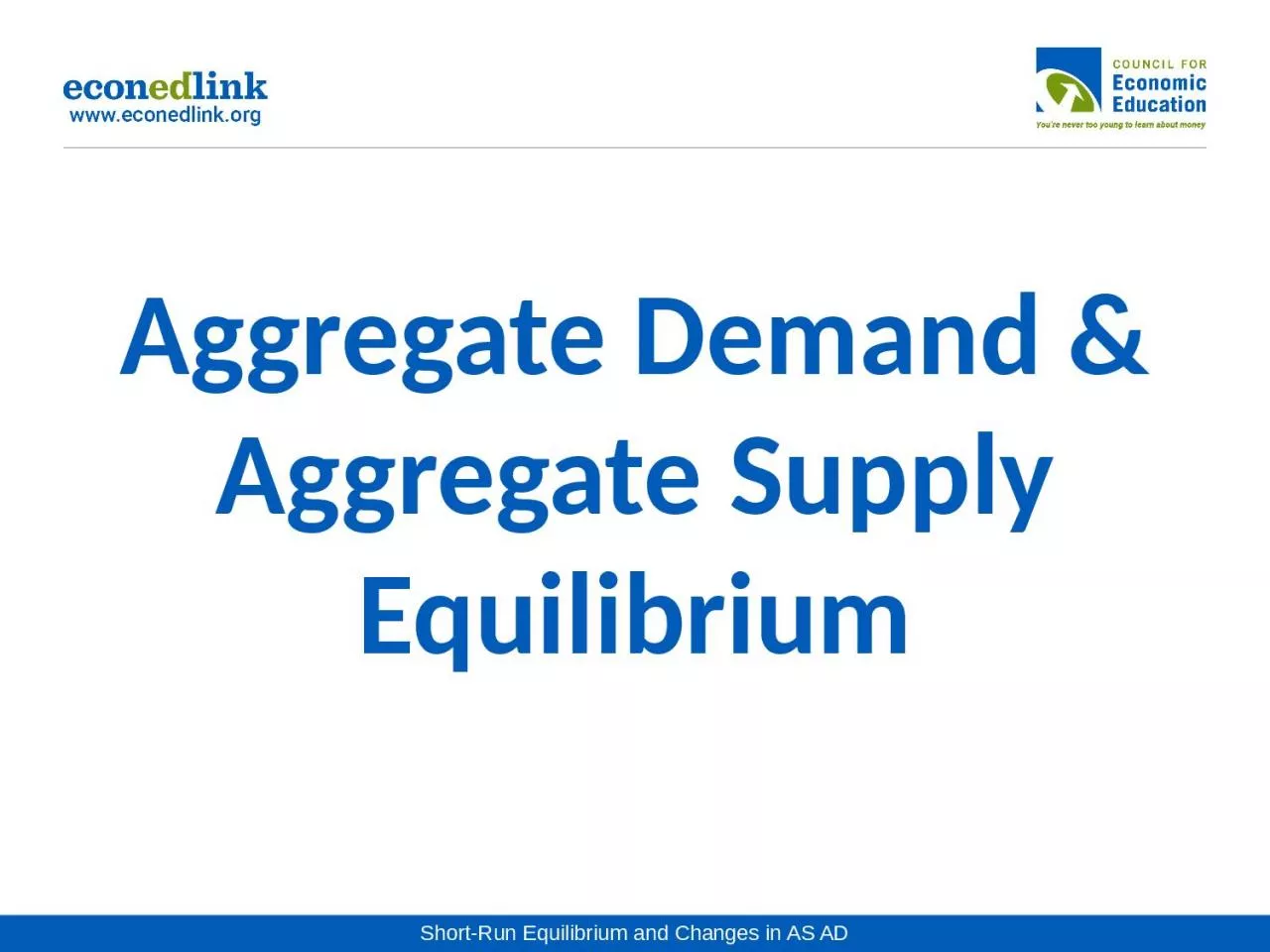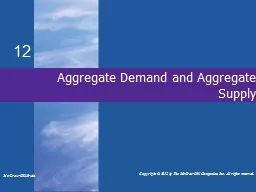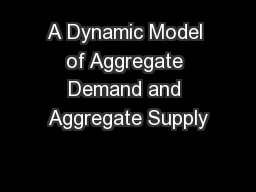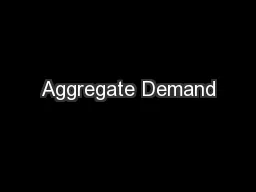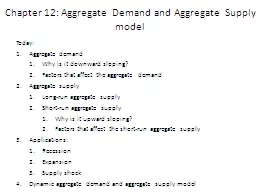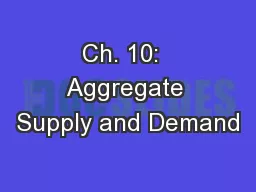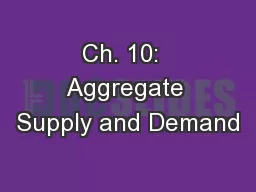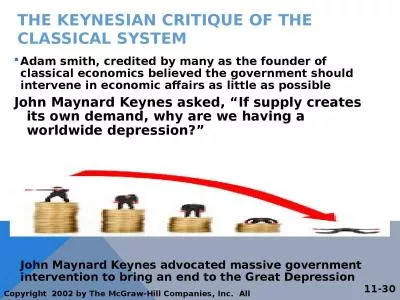PPT-Aggregate Demand & Aggregate Supply Equilibrium
Author : susan | Published Date : 2023-11-06
AD The Model PL RGDP AD PL Price Level ALL prices in the economy Real Gross Domestic Product Dollar value of ALL domestically produced final goods and services
Presentation Embed Code
Download Presentation
Download Presentation The PPT/PDF document "Aggregate Demand & Aggregate Supply ..." is the property of its rightful owner. Permission is granted to download and print the materials on this website for personal, non-commercial use only, and to display it on your personal computer provided you do not modify the materials and that you retain all copyright notices contained in the materials. By downloading content from our website, you accept the terms of this agreement.
Aggregate Demand & Aggregate Supply Equilibrium: Transcript
Download Rules Of Document
"Aggregate Demand & Aggregate Supply Equilibrium"The content belongs to its owner. You may download and print it for personal use, without modification, and keep all copyright notices. By downloading, you agree to these terms.
Related Documents

